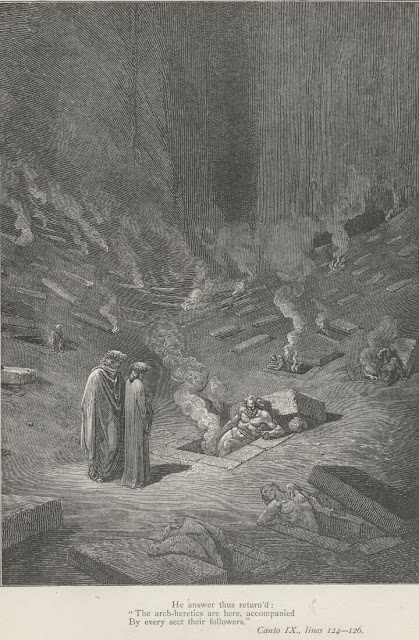Vincent Willem van Gogh (1853 – 29 July 1890)
Chûte de feuillus or Falling Autumn Leaves I
November 1888, Arles
Oil on canvas
73 x 92 cm
Rijksmuseum Kröller-Müller, Otterlo
Vincent Willem van Gogh (1853 – 29 July 1890)
Chûte de feuillus or Falling Autumn Leaves II
November 1888, Arles
Oil on canvas
72 cm × 91 cm
Private collection
Van Gogh painted the twin works when Gaughin was staying with him in Arles
The area is Les Alyscamps, Occitan for The Elysian fields, an area outside the town which was the site of an ancient Roman necropolis lined with poplars and stone sarcophagi.
Here is a photograph of the scene from 1870
Arles, Les Alyscamps
c. 1870
Print on albumen paper
0.115 m. x 0.168 m.
Musée d'Orsay, Paris
In a letter to his brother Theo dated 3rd November 1888, Vincent wrote:
"I think that you’d like the leaf-fall that I’ve done.
It’s lilac poplar trunks cut by the frame where the leaves begin.
These tree-trunks, like pillars, line an avenue where old Roman tombs coloured lilac-blue are lined up to right and left. Now the ground is covered as if by a carpet with a thick layer of orange and yellow leaves — fallen. Some are still falling, like snowflakes.
And in the avenue dark figurines of lovers. The top of the painting is a very green meadow and no sky, or almost none.
The second canvas is the same avenue but with an old fellow and a fat woman, round as a ball."
In April 1889 he had to send the works to Theo to be sold. He needed the money to pay for his board and lodging at the asylum in Arles. The prices for both totalled 400 francs
It was the main burial ground for 1500 years and from AD 250, the growing Christian influence can be detected until by AD 310 it was solely for Christian burial.
Until suppressed in the French Revolution and later by the Concordat of 1801, the See of Arles was one of the oldest and most important in the Western church
For centuries, martyr, saints and bishops resided in the town. It was also one of the most important centres of pilgrimage for centuries
Early important Church councils were held here
Dante reversed the image. He used it as a metaphor for Hell
In Canto IX of The Inferno, Dante and Virgil enter the city of Dis. There heretics are being punished in tombs burning with intense fire. the scene of the multitude of sephulcres is compared to the great number at Arles:
"We, unopposed, 105There enter’d; and, my mind eager to learnWhat state a fortress like to that might hold,I, soon as enter’d, throw mine eye around,And see, on every part, wide-stretching space,Replete with bitter pain and torment ill. 110
As where Rhone stagnates on the plains of Arles,Or as at Pola, near Quarnaro’s gulf,That closes Italy and laves her bounds,The place is all thick spread with sepulchres;So was it here, save what in horror here 115Excell’d: for ’midst the graves were scattered flames,Wherewith intensely all throughout they burn’d,That iron for no craft there hotter needs.
Their lids all hung suspended; and beneath,
From them forth issued lamentable moans, 120
Such as the sad and tortured well might raise."
Here is Sandro Botticelli`s vision of the scene
Sandro Botticelli 1445 - 1510
Dante and Virgil in the City of Dis amongst the tombs of the heretics
1480s
Silverpoint drawing on parchment, completed in pen and ink, coloured with tempera
Manuscript Reg. lat. 1986
Biblioteca Apostolica, Vatican
Here is the artist Gustave Doré`s conception of the same scene. You can access a free edition of The Divine Comedy featuring Doré’s illustrations at Project Gutenberg.






No comments:
Post a Comment